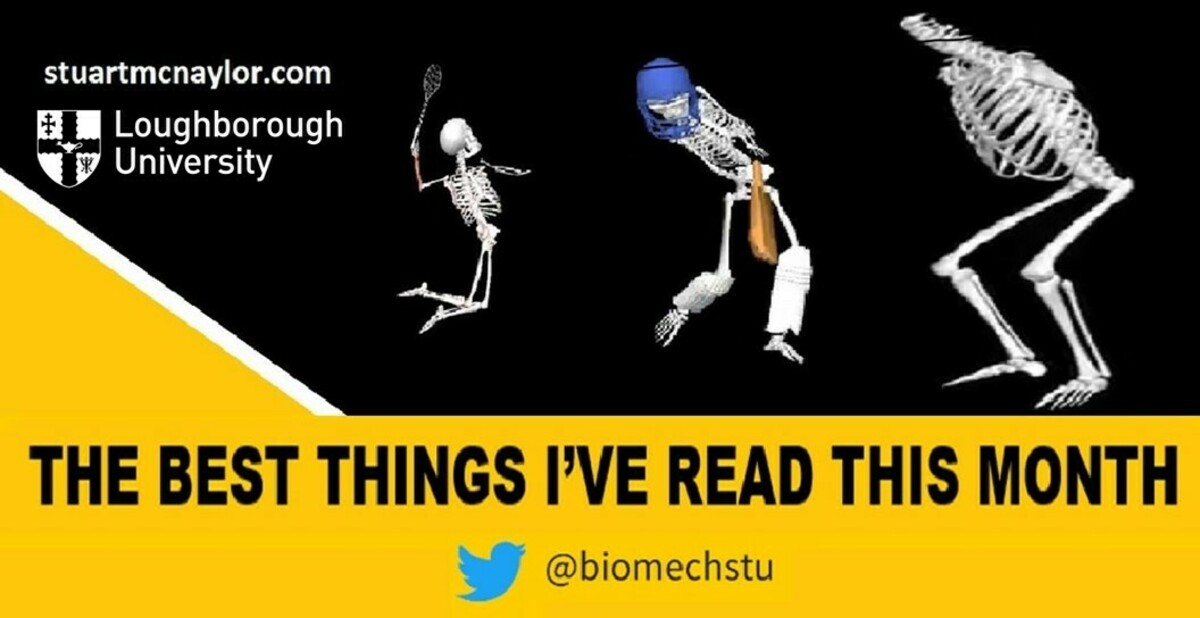
Here’s what I would like to share with you this month…
There are two sections: ‘What Have I Been Up To?’ and ‘What Have I Been Reading?’
What Have I Been Up To?
Historical racket development: I’m collaborating with Tom Allen from Manchester Metropolitan University on a “citizen science” study investigating historical racket development in sport. We’re building upon previous research by Tom’s group (see Twitter thread below or papers here and here ) by asking members of the public to submit details, measurements and photographs of their own rackets. We hope that the study, in partnership with the International Sports Engineering Association, will engage as many people as possible in all stages of the scientific process and assess the viability of this “citizen science” approach for future investigations. If you know anybody with access to some old rackets, check out the form at historicrackets.com or get in touch with any queries.
𝟭𝟬𝟬 𝘆𝗲𝗮𝗿𝘀 of #Wimbledon Centre Court 🎾
— Stuart McErlain-Naylor (@biomechstu) June 27, 2022
Tennis has changed a lot over the years, but how much was driven by racket development?
To find out, researchers measured 525 rackets dating back to 1874.
Time for a thread 🧵 #CentreCourt100 pic.twitter.com/iZEwTrdiXN
Scholarship of teaching and learning in biomechanics: If you’re hedaing to the International Society of Biomechanics in Sports (ISBS) conference in Liverpool this month, check out the pre-conference workshop on the Scholarship of Teaching and Learning in Biomechanics - hosted by Alex Atack, Duane Knudson, Chengtu Hsieh, and myself. Conference delegates can register here .
What Have I Been Reading?
Now for the main part of the newsletter…
Building a second brain: We consume more digital information than ever before. Think of all of the journal articles, videos, podcast episodes. blog articles, etc. that we come across and know will be useful at some point in the future but just not right now. Or all of the notes we make, knowing we may want to refer back to them in the future. How can we store and retrieve all of that information efficiently? Tiago Forte’s new book ‘Building a Second Brain’ is a guide to doing exactly that. As somebody whose entire memory/productivity seemingly relies on the notes apps on my phone, it was great to find a structure and system for doing this a little more effectively. I strongly recommend the book / audiobook for anybody in the same position.
Load monitoring FAQs: Jo Clubb seeks to answer 10 commonly asked questions related to ‘training load’ monitoring in sport. Examples include “Why do we monitor athlete load?”, “What are internal and external load?”, “What technology/metrics should I use?”, “Can it predict injury?”, and “How do I gain athlete buy-in?”. I really liked this relatively simple introductory overview, aimed at a wide audience.
Contributions to maximal motoneuron output: The origin of inputs underlying maximal motoneuron output is unclear. Škarabot et al. tested a hypothesis that this output will increase in response to a startling cue (which activates specific neurons that make connections to motoneurons via fast-conducting axons). It’s a really nice study comparing reaction time, motor unit discharge rate, and maximal rate of force development in response to different cues.
“Trending towards significance”: p = 0.052, we’ve all been there. That’s ‘trending towards significance’, right? No! This short article simulates the effect of adding more data to results that are already close to the traditional threshold of significance. In summary, “We have shown that a P value is by no means assured to become smaller even with the addition of quite a substantial proportion of extra data, a finding that undermines any claim of a trend towards statistical significance.” I’m a big fan of papers like this that demonstrate what is happening ‘under the hood’ and help with understanding what our results actually mean.
An introduction to mixed effects models: Similarly, I love it when people share their learning journey and help others in the process. This blog post by Meghan Hall shares their learning of mixed effects models, including fixed and random effects. This is all done in a “beginner’s Introduction” guide through the use of sample ice hockey data.
Thank You
That’s all for this month. If you found it useful, please forward this email or share this link with friends, colleagues, or on social media.
What Have You Read Recently?
If you’ve read anything particularly interesting or useful recently, please reply to this email and let me know. I read all of the replies and I’m always looking for good reading suggestions.
Take care, and thank you for reading. I hope you have a great July!
Stuart